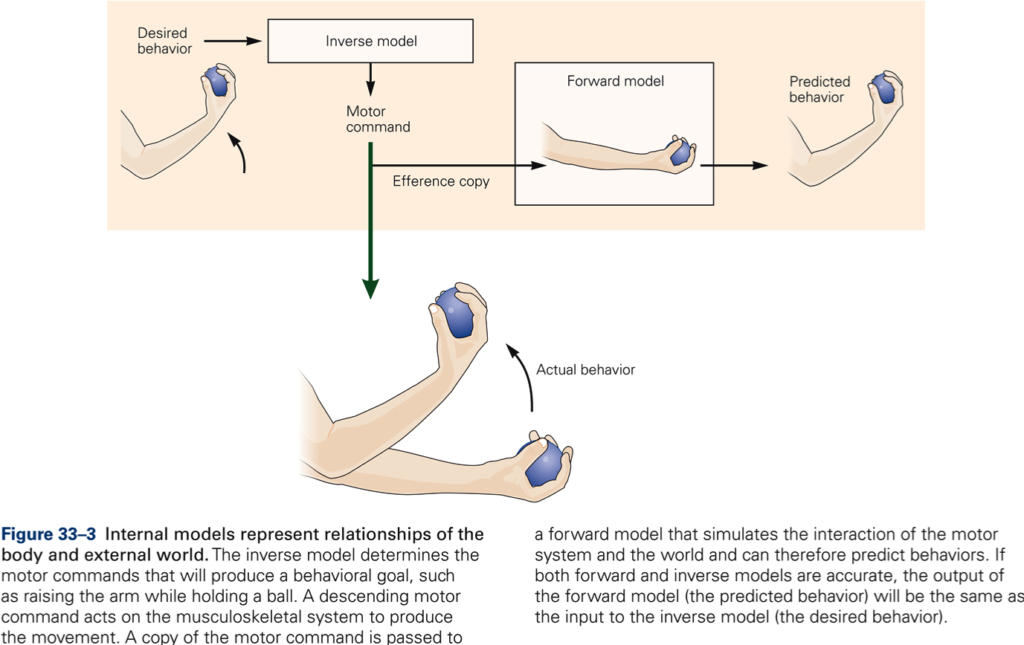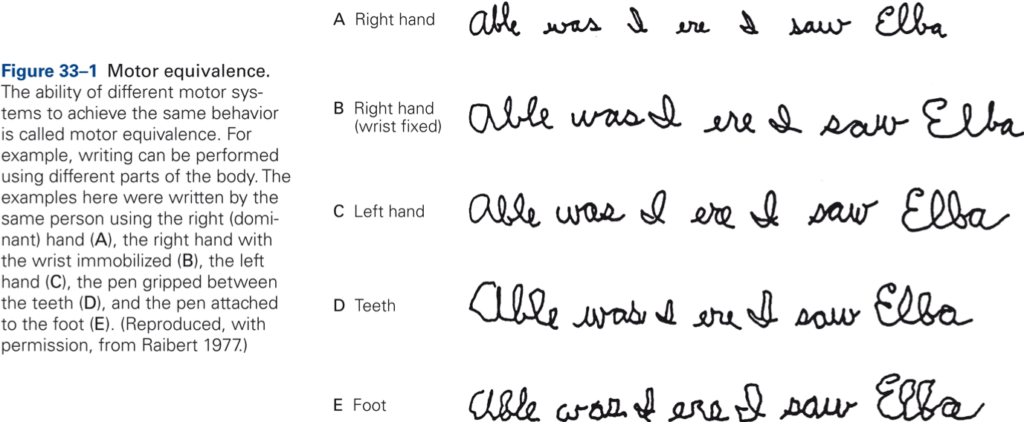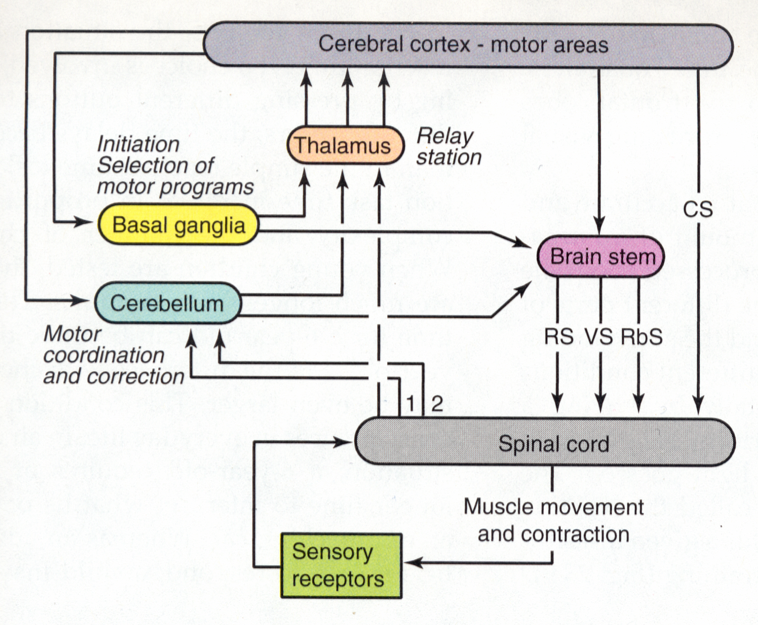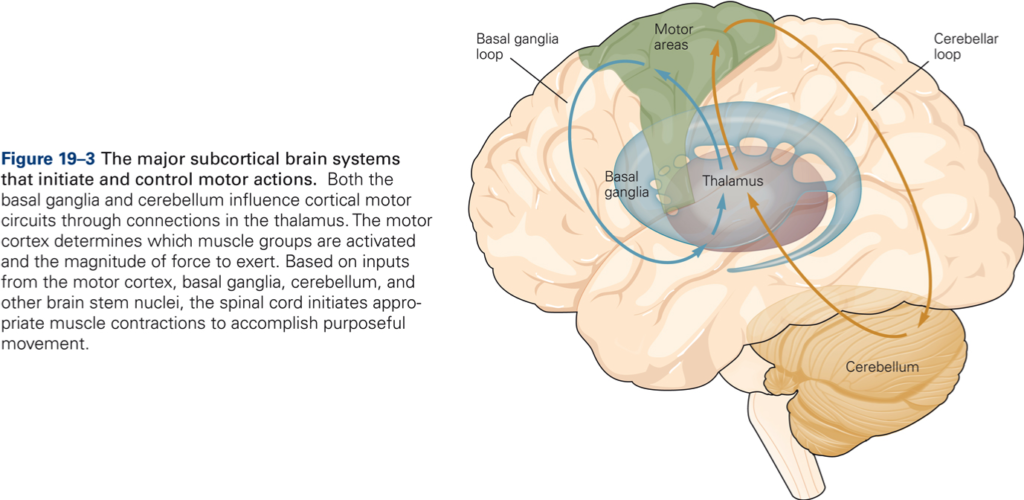M2 | Spinal Mechanisms for Sensorimotor Integration
Introduction to Neural Control of Movement
Neuroscientist Daniel Wolpert starts from a surprising premise: the brain evolved, not to think or feel, but to control movement. In this entertaining, data-rich talk he gives us a glimpse into how the brain creates the grace and agility of human motion.
Transcript: Daniel Wolpert at TEDGlobal 2011

References
Wolpert, D. M. and J. R. Flanagan (2001). “Motor prediction.” Current Biology 11(18): R729-R732. PubMed | PDF
What are some of the complexities involved in the control of movement?
Sensorimotor integration
Motor signals are generated by the central nervous system (CNS). The generation of motor commands requires up-to-date sensory information from peripheral receptors. Consider for example a limb movement to reach to grasp an object. Visual receptors in the retina provide information about where the object is located; muscle and joint receptors provide information about the limb’s initial position. Knowledge of both target location and limb position is necessary to accurately move the limb to the target. Thus the seemingly simple task of reaching to grasp an object is really a complex process that involves integration of sensory and motor signals. Understanding how reach-to-grasp movements are controlled by the central nervous system will ultimately require understanding of the multiple stages of information processing that occur between the retinal image of a visual target in a given spatial location and the motor output signals that move the hand to the target. This process is generally assumed to involve a sequence of sensorimotor transformations that produce signals for the appropriate patterns of muscle activation.
Degrees of freedom problem
The degrees of freedom problem refers to the problem of how a complex system constrains the system’s many degrees of freedom to produce a specific result. Lets consider movement of the thumb as an example of the difficulties in describing movements fully and precisely. The thumb can move in 3 planes: flexion/extension, adduction/abduction, and movements to oppose the remaining fingers. There are 3 additional planes of movement at the wrist, 1 at the elbow, 3 at the shoulder. So the tip of the thumb can move in 27 different planes of movement. Adding to this complexity is the fact that movements in each plane are affected by at least 2 muscles, one for each direction of movement. It is clear that the task of simultaneously controlling all of these variables is formidable.
Voluntary movements require postural adjustments
Voluntary limb movements (for example, extending an arm to catch a ball) are accompanied by activation of musculature of the legs and trunk to compensate for the disturbance in posture that results from the shift in weight produced by the arm movement.
How does the motor system deal with these complexities?
Different parts of the motor system are specialized for different stages of movement production. For example, the structures involved in the idea to move are different from those involved in generating the movement plan, and these in turn are different from the ones that actually execute the movement.

What neural structures are involved in the control of movement?
The motor system is organized as a hierarchy with three main levels of control.

Motor control hierarchy
Highest level: association areas of cerebral cortex, basal ganglia. Function: strategy, goal of the movement and strategy that best achieves the goal.
Intermediate level: cerebral cortical motor areas and cerebellum. Function: tactics, the sequences of muscle contractions, in space and time, required to smoothly and accurately achieve the strategic goal.
Lowest level: brain stem and spinal cord. Function: execution, activation of the motor neuron and interneuron pools that generate the goal-directed movement and make any necessary adjustments in posture.
Levels of control are connected in series as well as in parallel. For example, cerebral cortical motor areas project directly to the spinal cord via the corticospinal tracts, and indirectly via descending motor pathways that originate from brainstem nuclei.

Key Takeaways
Three hierarchical levels of control:
- Cerebral cortex: voluntary movements, least automatic movements.
- Brain stem: posture, rhythmical movements.
- Spinal cord: reflexes, most automatic movements.
Two subcortical systems provide connections between hierarchical levels of control:
- Basal ganglia receive input from all regions of cerebral cortex and output targets motor, premotor and prefrontal cortex. The basal ganglia are involved in movement initiation and in cognitive aspects of movements.
- Cerebellum receives input from all hierarchical levels and its output targets all structures involved in the production of movement. The cerebellum is involved in movement coordination and motor learning.


